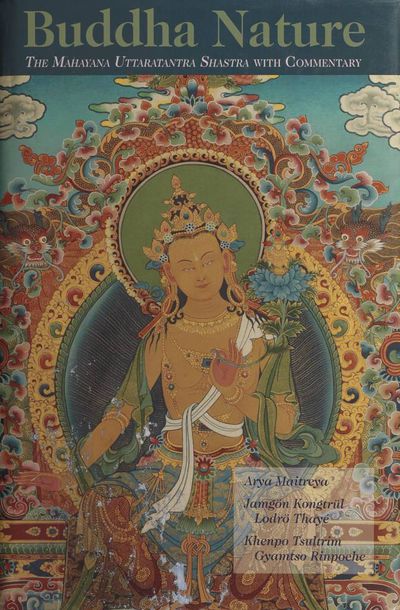- Foreword by Tenzin Dorjee 8
- Preface by Rosemarie Fuchs 10
- Introduction by Acharya Lodrö Namgyal 12
- Part One: Root Text 17
- 1. Tathagatagarbha 19
- Introduction 19
- The First Three Vajra Points: The Three Jewels 20
- Buddha 20
- Dharma 20
- Sangha 21
- The Three Refuges 22
- The Last Four Vajra Points 22
- The Fourth Vajra Point: The Element 23
- 2. The Fifth Vajra Point: Enlightenment 43
- 3. The Sixth Vajra Point: Qualities 53
- 4. The Seventh Vajra Point: Activity 59
- 5. Benefit 73
- Part Two: Commentary, The Unassailable Lion’s Roar 79
- Table of Contents 81
- 1. Tathagatagarbha 97
- Introduction 97
- The First Three Vajra Points: The Three Jewels 101
- The First Vajra Point: Buddha 101
- The Second Vajra Point: Dharma 105
- The Third Vajra Point: Sangha 108
- The Three Refuges 112
- The Last Four Vajra Points 114
- The Fourth Vajra Point: The Element 117
- 2. The Fifth Vajra Point: Enlightenment 182
- 3. The Sixth Vajra Point: Qualities 218
- 4. The Seventh Vajra Point: Activity 238
- 5. Benefit 283
- Part Three: Explanations by Khenpo Tsultrim Gyamtso Rinpoche 299
- Part Four: Translator’s Notes 391
Buddha Nature: The Mahayana Uttaratantra Shastra
All sentient beings, without exception, have buddha nature, the inherent purity and perfection of the mind, untouched by changing mental states. The Mahayana Uttaratantra Shastra, one of the "Five Treatises" said to have been dictated to Asanga by the Bodhisattva Maitreya, presents the Buddha's definitive teachings on how we should understand this ground of enlightenment and clarifies the nature and qualities of buddhahood. This seminal text details with great clarity the view which forms the basis for Vajrayana, and especially Mahamudra, practice. Thus it builds a bridge between the Sutrayana and the Vajrayana levels of the Buddha's teaching, elaborated here in Jamgön Kongtrül's commentary. (Source: Shambhala Publications)
| Citation | Fuchs, Rosemarie, trans. Buddha Nature: The Mahayana Uttaratantra Shastra. By Arya Maitreya. Written down by Arya Asanga. With a commentary by Jamgön Kongtrül Lodrö Thayé ('jam mgon kong sprul blo gros mtha' yas) "The Unassailable Lion's Roar," and explanations by Khenpo Tsultrim Gyamsto Rinpoche. Ithaca, NY: Snow Lion Publications, 2000. |
|---|---|
- 'jam mgon kong sprul. theg pa chen po rgyud bla ma'i bstan bcos snying po'i don mngon sum lam gyi bshad pa srol dang sbyar ba'i rnam par 'grel ba phyir mi ldog pa seng ge'i nga ro. rumtek: karma pa chos sgar, 1972. Printed from woodblocks preserved at Rumtek Monasterty.

- Maitreya; Asaṅga. mahāyānottaratantraśāstra-ratnagotra-vibhāga, (theg pa chen po rgyud bla ma'i bstan bcos). (P5525), sems tsam, phi 54b7-74b6 (vol.108, p.24-32); (Tōh) 4024, sems tsam, phi 54b1-73a7. (N) phi 48b3-69a3. (Kinsha)3524, phi 64b1 (p.33-3-1). In bstan 'gyur (sde dge), Vol. 123: 107-146. Delhi: delhi karmapae choedhey, gyalwae sungrab partun khang, 1982-1985.



